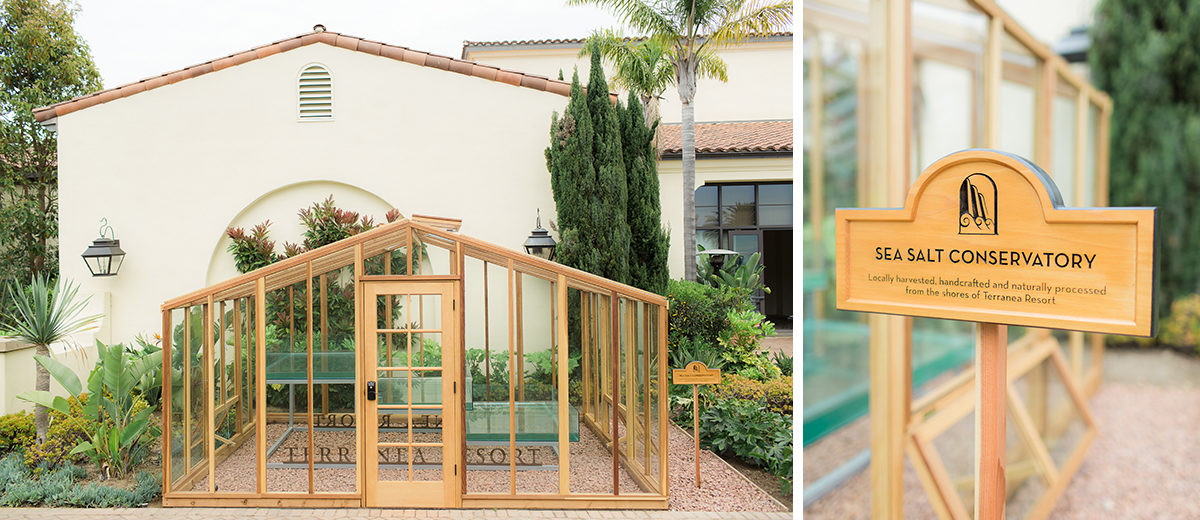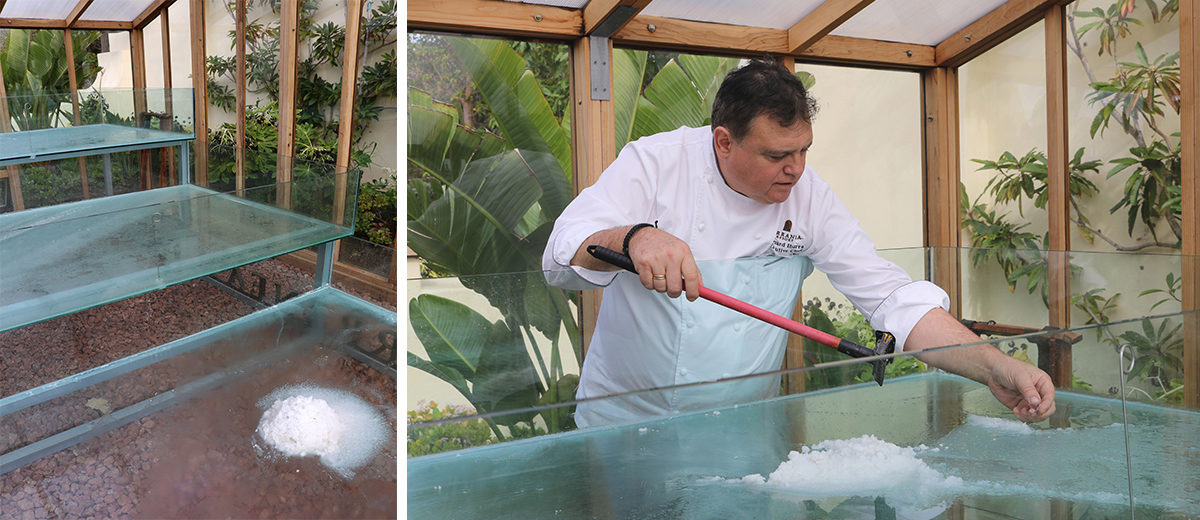Farming the Ocean
Executive Chef Bernard Ibarra Brings the Pacific Ocean to Terranea Resort’s Tables
by Karen Moneymaker | photos courtesy of Terranea Resort
 Terranea’s Sea Salt Conservatory in Rancho Palos Verdes, CA
Terranea’s Sea Salt Conservatory in Rancho Palos Verdes, CA
Famed author Karen Blixen once wrote that “the cure for anything is salt water: sweat, tears or the sea.” One could argue, though, that a quick jaunt to Terranea Resort will fix most of what ails you, without the sweat and tears.
Here in Rancho Palos Verdes, Executive Chef Bernard Ibarra continues to hone his “Farm-to-Terranea” concept with onsite gardens and beehives. The crown jewel in this pursuit—the Sea Salt Conservatory— evolved from a creative idea into a living, breathing labor of love for the chef: Ibarra looked out at the Pacific Ocean and saw its potential to yield not just amazing seafood, but one of the world’s most essential ingredients as well.
“Before I began the salt project, I learned that nearby Abalone Cove received a 97 out of 100 points for water quality,” shares Ibarra. “I sent a sample of sea water and a first batch of salt to the lab for analysis. The salt tested close to 27 percent sodium content [table salt is typically 40 percent], and it has more minerals than most salts. The lab chemist who analyzed the salt says it is one of the best he has tested.”
The salt produced in Terranea’s Sea Salt Conservatory—a stunning wood-and-glass construction that opened its doors in 2015—makes its way into many of the dishes Chef Ibarra creates. It’s also an essential element in the resort’s “Farm-to-Terranea” dinners, which feature a seasonally-themed menu highlighting the locally- and sustainably-grown ingredients.
Salt farming at Terranea, in three steps:
Chef Ibarra and his staff transport buckets of Pacific seawater from Terranea’s Beach Cove, which sits adjacent to the resort property.
Inside the conservatory, Ibarra has set up three-tiered basins that serve as salt pans in which the seawater brine slowly evaporates, leaving behind salt crystals.
After about two weeks, Ibarra harvests the pure finished salt, which is rich in minerals like magnesium and potassium—making it both beneficial and delicious. The salt then makes its way into Ibarra’s California coastal cuisine.





